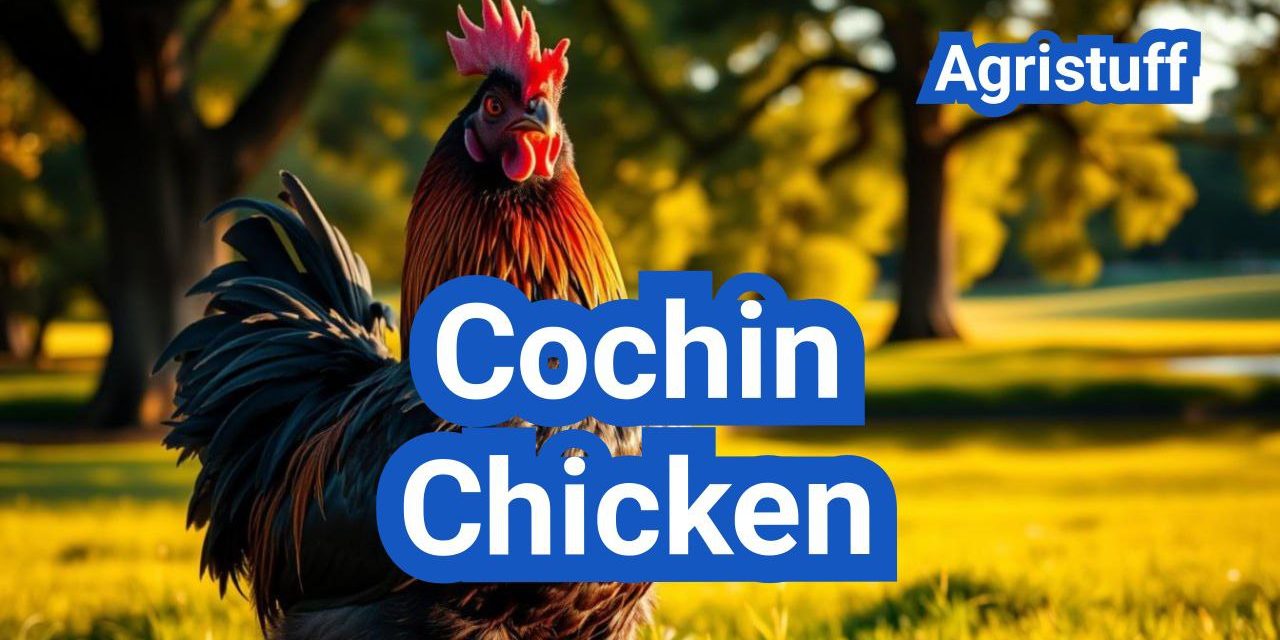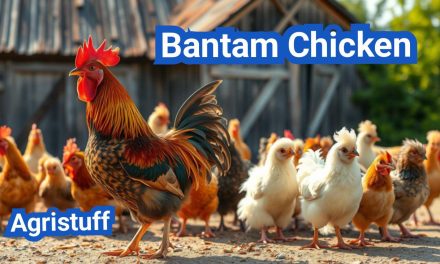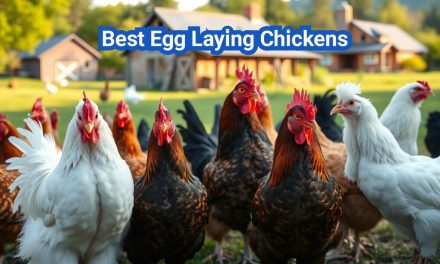The Cochin chicken breed is renowned for its friendly nature and impressive size, making it a beloved addition to many backyard flocks.
As a heritage chicken breed, Cochin chickens are cherished for their distinctive feathered legs and gentle disposition. They are an excellent choice for families and beginners, as they are easy to handle and care for.
With their rich history and unique characteristics, it’s no wonder that Cochin chickens have become a popular choice among poultry enthusiasts.
Key Takeaways
- Cochin chickens are known for their friendly and gentle nature.
- They are a heritage breed with distinctive feathered legs.
- Cochin chickens are large in size and easy to handle.
- They make an excellent choice for families and beginners.
- Cochin chickens are a popular choice among poultry enthusiasts.
The History and Origin of Cochin Chickens
With roots tracing back to 19th-century China, Cochin chickens have become a beloved breed worldwide. Their journey from ancient China to global popularity is a fascinating story that involves not just their unique characteristics but also their historical significance.
Ancient Chinese Roots
Cochin chickens originated in China, where they were bred for their size, feathering, and gentle disposition. The breed’s ancient Chinese roots are well-documented, highlighting their importance in Chinese poultry culture.
Introduction to the Western World
The introduction of Cochin chickens to the Western world marked a significant turning point in their history. Brought to Europe and North America in the mid-19th century, they quickly gained popularity among poultry enthusiasts. Their distinctive appearance and friendly nature made them a favorite.
- First introduced in England in the 1840s
- Quickly gained popularity in the United States
- Became a staple in many backyard flocks
The Victorian Poultry Craze
During the Victorian era, Cochin chickens became a central part of the poultry craze that swept through England and other parts of Europe. Their unique features and gentle disposition made them highly sought after by poultry fanciers.
- The breed’s large size and feathering captivated many
- Poultry shows became popular, with Cochins being a main attraction
- Their popularity led to further breeding and development of the breed
Understanding the Cochin Chicken Breed
As a heritage breed, Cochin chickens offer a glimpse into the past while remaining a popular choice today. Their rich history and unique characteristics make them a fascinating subject for poultry enthusiasts.
Classification as a Heritage Breed
Cochin chickens are recognized as a heritage breed due to their historical significance and adherence to traditional breeding standards. Heritage breeds are valued for their genetic diversity and the role they play in preserving poultry history.
“Heritage breeds like the Cochin chicken are essential for maintaining the genetic diversity of poultry,” according to the American Poultry Association.
Standard vs. Bantam Varieties
Cochin chickens come in both standard and bantam sizes, catering to different preferences among poultry keepers. The standard Cochin is known for its large size and fluffy feathers, while the bantam Cochin is a smaller, more compact version.
The choice between standard and bantam Cochins often depends on the available space and the desired level of interaction with the birds.
Place in Modern Poultry Keeping
In modern poultry keeping, Cochin chickens are cherished for their friendly disposition and low-maintenance care. They are suitable for backyard flocks and are often kept for their eggs and as pets.
- Cochin chickens are known for their gentle nature, making them a good choice for families.
- They are relatively low-maintenance compared to other breeds.
- Their eggs are a bonus, although production rates can vary.
Overall, Cochin chickens bring a touch of heritage and charm to any poultry flock.
Physical Characteristics of Cochin Chickens

Cochin Chickens are renowned for their impressive size and stunning feathering. These gentle giants of the poultry world have several distinct physical characteristics that make them stand out among other breeds.
Size and Weight Specifications
Cochin Chickens are known for their large size. Standard Cochin Chickens can weigh between 8 to 11 pounds (3.6 to 5 kg), with roosters typically being larger than hens. The bantam variety, while smaller, still maintains a substantial presence, weighing around 2 to 3 pounds (0.9 to 1.4 kg).
| Breed Variety | Weight Range (lbs) | Weight Range (kg) |
|---|---|---|
| Standard Cochin Rooster | 10-11 | 4.5-5 |
| Standard Cochin Hen | 8-9 | 3.6-4 |
| Bantam Cochin | 2-3 | 0.9-1.4 |
Distinctive Feathering Patterns
One of the most striking features of Cochin Chickens is their beautiful feathering. They have a soft, fluffy plumage that covers their body, including their legs and feet. The feathering can come in a variety of patterns and colors, adding to their visual appeal.
Feathered Legs and Feet
Cochin Chickens are characterized by their heavily feathered legs and feet. This feature not only adds to their aesthetic appeal but also requires special care to prevent mud and debris from accumulating among the feathers.
“The feathered legs of Cochin Chickens are one of their most distinctive features, setting them apart from other breeds.” – Poultry Expert
Body Shape and Structure
The body of a Cochin Chicken is broad and deep, with a curved breast and a short, curved back. Their overall structure contributes to their sturdy appearance and gentle demeanor.
In summary, Cochin Chickens are a breed that combines size, beauty, and a unique appearance, making them a cherished addition to many backyard flocks.
Cochin Chicken Colors and Varieties
With their rich history and diverse genetics, Cochin chickens come in a wide range of captivating colors and varieties. This diversity is one of the breed’s most appealing characteristics, making them a favorite among poultry enthusiasts and backyard keepers alike.
Standard Cochin Color Varieties
Standard Cochin chickens are available in a variety of colors, each with its unique charm. Some of the most popular colors include buff, white, black, and blue. The buff variety, with its warm, golden tones, is particularly popular for its striking appearance.
The white Cochin is another favorite, known for its pristine, snowy plumage. Black Cochins, with their glossy feathers, offer a dramatic contrast, while blue Cochins provide a softer, more muted tone that is equally captivating.
Bantam Cochin Color Varieties
Bantam Cochin chickens, being smaller versions of their standard counterparts, also come in a range of colors. The bantam Cochin colors mirror those of the standard breed, including buff, white, black, and blue. The bantam size makes them ideal for smaller backyard flocks or for those who prefer the charm of smaller chickens.
Bantam Cochins are particularly noted for their friendly and outgoing personalities, making them a great choice for families or for those new to chicken keeping. Their smaller size also means they require less space, making them suitable for urban or suburban settings.
In conclusion, whether you prefer the standard or bantam size, Cochin chickens offer a diverse range of colors and varieties to suit any taste or preference. Their rich colors and friendly nature make them a wonderful addition to any flock.
How to Select Quality Cochin Chickens

To ensure you’re getting quality Cochin Chickens, it’s essential to know what to look for. Selecting the right birds involves evaluating their physical traits, assessing their health and vigor, understanding where to purchase them, and being aware of their prices.
Evaluating Physical Traits
When evaluating Cochin Chickens, their physical traits are a crucial indicator of their quality. Look for birds with distinctive feathering patterns and feathered legs and feet, characteristics that define the breed. The size and weight of the chickens should also conform to the breed standard.
Inspect the chickens for any signs of physical deformities or irregularities. A healthy Cochin Chicken should have a broad, deep body, well-feathered legs, and a small, pea comb. The feathers should be soft and fluffy, with no signs of stress or damage.
Assessing Health and Vigor
A healthy Cochin Chicken is active, alert, and responsive to its surroundings. Check for signs of illness or stress, such as labored breathing, lethargy, or discharge from the eyes or beak. The chickens should have clean, dry vents and be free from parasites.
Observe the chickens’ behavior. Healthy birds are curious and active, while sick or stressed birds may appear lethargic or isolated.
Where to Purchase Cochins
You can purchase Cochin Chickens from reputable breeders, local feed stores, or online poultry suppliers. It’s crucial to research the seller to ensure they are providing healthy, quality birds.
When buying online, check for reviews and testimonials from other customers. Ask the seller about the health guarantees and any vaccinations or health checks the chickens have undergone.
Understanding Cochin Chicken Prices
The price of Cochin Chickens can vary based on factors such as age, quality, and location. On average, you can expect to pay between $30 to $100 per bird, depending on whether you’re buying a standard or bantam variety.
| Type | Average Price Range |
|---|---|
| Standard Cochin | $50-$100 |
| Bantam Cochin | $30-$70 |
By understanding these factors and knowing what to look for, you can make an informed decision when selecting quality Cochin Chickens for your flock.
Setting Up Housing for Cochin Chickens
The right housing setup is essential for Cochin Chickens, ensuring they lead happy and healthy lives. Providing a safe and comfortable environment is crucial for their overall well-being.
Coop Size and Design Requirements
Cochin Chickens are large birds and require spacious housing. The coop should be well-ventilated, dry, and protected from predators. A minimum of 4-5 square feet per bird inside the coop is recommended.
Key considerations for coop design include:
- Easy cleaning and access
- Adequate ventilation
- Protection from the elements
- Predator-proofing
Roost and Nesting Box Specifications
Cochin Chickens are known to be good roosters, and they need appropriate roosting bars. The roosting bars should be sturdy, at least 2 inches in diameter, and placed higher than the nesting boxes.
| Specification | Recommendation |
|---|---|
| Roosting Bar Diameter | 2 inches |
| Nesting Box Size | 12×12 inches |
| Nesting Boxes per Hen | 1 per 3-4 hens |
Run Requirements and Free-Ranging Options
A secure run is essential for Cochin Chickens, providing them with space to exercise and fresh air. The run should be fenced with hardware cloth to prevent predator entry.
Free-ranging can be beneficial, but it requires supervision to protect the chickens from predators and prevent them from getting lost.
Special Considerations for Feathered Feet
Cochin Chickens have feathered feet, which require special care. The coop and run should be kept clean and dry to prevent foot problems.
“Keeping the living area clean and dry is crucial for the health of Cochin Chickens, especially considering their feathered feet.”
By following these guidelines, you can create a comfortable and safe living environment for your Cochin Chickens, ensuring their health and happiness.
Complete Cochin Chicken Care Guide

To keep your Cochin Chickens healthy and happy, it’s essential to understand their specific care needs. Cochin Chickens require regular care, including daily feeding and cleaning, to thrive in a backyard setting.
Daily Care Routine
A daily care routine is crucial for maintaining the health and well-being of your Cochin Chickens. This includes providing fresh water and food, cleaning the coop, and ensuring the chickens have enough space to roam.
- Check and refill feeders and waterers daily.
- Clean the coop and nesting boxes regularly to prevent disease.
- Provide enough space for your chickens to exercise and engage in natural behaviors.
Seasonal Care Adjustments
Cochin Chickens require different care during various seasons. Summer care involves providing shade and ensuring adequate ventilation to prevent heat stress. In the winter, it’s crucial to keep the coop dry and provide extra bedding to keep the chickens warm.
Adjusting your care routine according to the season is vital for the health of your Cochin Chickens. This may include:
- Providing extra water during hot weather.
- Ensuring the coop is well-ventilated but draft-free.
- Monitoring temperature extremes.
Grooming and Feather Maintenance
Cochin Chickens are known for their beautiful, fluffy feathers, which require regular maintenance. Regular grooming helps prevent matting and keeps their feathers in good condition.
Grooming tips include:
- Gently cleaning around the vent area.
- Checking for and removing any mites or lice.
- Providing dust baths for the chickens to clean themselves.
Implementing Backyard Biosecurity Measures
Biosecurity is critical for preventing disease in your backyard flock. This includes measures such as controlling visitor access, using disinfected equipment, and monitoring the health of your chickens.
Effective biosecurity measures include:
- Restricting access to the coop and run.
- Using foot baths or boot covers for visitors.
- Regularly inspecting your chickens for signs of illness.
Feeding and Nutrition for Optimal Health

To keep your Cochin Chickens healthy and happy, it’s essential to understand their dietary requirements. A balanced diet is crucial for their overall health, egg production, and feather condition.
Daily Dietary Requirements
Cochin Chickens need a diet rich in nutrients, including proteins, carbohydrates, vitamins, and minerals. A layer feed is recommended for hens that are producing eggs, as it contains the necessary calcium for strong eggshell production.
The dietary requirements may vary depending on the age and production status of the chicken. For instance, chick starter is necessary for young chicks, while grower feed is suitable for pullets.
Supplements and Treats
While a balanced commercial feed should be the mainstay of their diet, supplements and treats can be given in moderation. Fresh fruits and vegetables make healthy treats, but avoid giving too much, as they can lead to nutritional imbalances.
Supplements like oyster shells can be provided to support eggshell production. However, it’s crucial to introduce supplements judiciously to avoid over-supplementation.
Water Requirements
Access to clean, fresh water is vital for Cochin Chickens. Ensure that waterers are clean and free from contamination. Water intake can increase during hot weather, so it’s essential to check water levels frequently.
Feeding Schedule Recommendations
Establishing a regular feeding schedule helps maintain the health of Cochin Chickens. Feed them at the same times each day to create a routine. For laying hens, ensure that they have access to feed throughout the day.
It’s also important to monitor their consumption and adjust the feeding schedule as necessary. Avoid overfeeding, as it can lead to obesity and other health issues.
Managing Cochin Chicken Health

Ensuring the health and vitality of Cochin Chickens involves understanding their specific needs and providing appropriate care. Cochin Chickens are generally a healthy breed, but like all poultry, they can be prone to certain health issues. “A healthy Cochin Chicken is a happy chicken,” as many backyard poultry enthusiasts would agree.
Common Health Issues
Cochin Chickens can be susceptible to various health issues, including respiratory problems, parasites, and obesity due to overfeeding. Regular monitoring and a balanced diet are crucial in preventing these issues.
Respiratory issues can arise from dusty environments or drafts. Ensuring good ventilation in the coop is essential.
Preventative Care Practices
Preventative care is key to maintaining the health of Cochin Chickens. This includes regular vaccinations, parasite control measures, and providing a clean, safe living environment.
- Regularly inspect the flock for signs of illness or stress.
- Keep the coop clean and dry to prevent disease.
- Provide a balanced diet to support overall health.
Heat Stress Prevention and Management
Cochin Chickens, with their thick feathering, can be particularly susceptible to heat stress. Providing shade, ensuring access to plenty of cool water, and avoiding overcrowding can help mitigate this risk.
“Heat stress in chickens can be devastating. Keeping your flock cool during the hot summer months is crucial for their survival.”
Cold Weather Care Techniques
In contrast, Cochin Chickens are well-suited to colder climates due to their dense feathering. However, they still require a dry, draft-free coop and adequate nutrition to maintain their health during winter.
Ensuring that the coop is well-ventilated but free from drafts is a delicate balance. Using a deep litter method can help keep the coop warm and dry.
Bantam Cochin Chickens: A Special Guide

Bantam Cochin chickens are a delightful smaller version of the standard Cochin breed, offering many of the same charming characteristics in a more compact size. These birds are perfect for backyard enthusiasts who have limited space but want to enjoy the gentle and friendly nature of Cochins.
Unique Characteristics of Bantam Cochins
Bantam Cochins retain the distinctive features of their larger counterparts, including their fluffy feathers, feathered legs, and friendly demeanor. They are known for their calm and docile nature, making them an excellent choice for families with children.
Key Characteristics:
- Compact size, ideal for small backyards
- Fluffy feathers and feathered legs
- Friendly and docile nature
- Variety of colors available
Popular Varieties: Black, Buff, and Golden Laced
Bantam Cochins come in a variety of colors, with Black, Buff, and Golden Laced being among the most popular. Each variety has its unique charm and appeal.
| Variety | Description |
|---|---|
| Black | Glossy black feathers with a green sheen in the right light |
| Buff | Warm, golden-buff color throughout their plumage |
| Golden Laced | Rich golden color with intricate black lacing on their feathers |
Special Care Requirements for Bantams
While Bantam Cochins are generally easy to care for, they do require some special considerations. Their small size means they can be more susceptible to cold and damp conditions, so a dry and draft-free coop is essential.
“Bantam Cochins are a joy to keep, but they do need a bit more TLC than some other breeds due to their small size and fluffy feathers.”
Showing Bantam Cochins
For those interested in showing their Bantam Cochins, it’s essential to understand the breed standards and judging criteria. Regular grooming, including feather maintenance and nail trimming, is crucial for presenting your birds at their best.
Cochin Chicken Egg Production

Cochin Chickens may not be the most prolific egg layers, but they offer a unique combination of eggs and companionship. These gentle giants are moderate egg producers, laying brown eggs that are not only delicious but also a joy to collect.
Egg Color, Size, and Quality
Cochin Chickens lay brown eggs, which can vary in shade from a light brown to a darker, richer brown. The size of the eggs is typically medium to large, depending on the age and health of the hen. The quality of the eggs is generally high, with strong shells and a rich, creamy yolk.
Egg quality is influenced by the diet and health of the hen. Providing a balanced diet that includes calcium supplements can help maintain strong eggshells.
Production Rate and Seasonality
Cochin Chickens are considered moderate egg producers, laying around 180-200 eggs per year. Their egg production is influenced by seasonal changes, with most eggs being laid during the spring and summer months.
As with many breeds, egg production slows down during the winter months due to shorter daylight hours and colder temperatures. Understanding this seasonality can help you manage your expectations and care for your hens accordingly.
Maximizing Egg Production
To maximize egg production, it’s essential to provide your Cochin Chickens with a nutritious diet, plenty of fresh water, and a clean, comfortable living environment.
- Ensure adequate lighting, especially during winter months.
- Provide a balanced diet that includes layers’ feed.
- Keep the coop clean and well-ventilated.
- Minimize stress by providing enough space and reducing predator threats.
Collecting and Storing Cochin Eggs
Collecting eggs regularly is crucial to encourage hens to continue laying. Store eggs in a cool, dry place, pointed end down, to maintain freshness.
“The way to get started is to quit talking and begin doing.” – Walt Disney
While this quote isn’t directly about egg collection, it emphasizes the importance of taking action, like regularly collecting eggs, to maintain a healthy and productive flock.
Breeding and Raising Cochin Chickens

The process of breeding and raising Cochin Chickens can be a rewarding experience for poultry enthusiasts. Cochin Chickens are known for their broodiness and make good mothers, often going broody and successfully raising their chicks.
Working with Broody Hens
One of the unique characteristics of Cochin Chickens is their tendency to go broody. A broody hen is one that wants to sit on eggs and hatch them. To work effectively with broody hens, it’s essential to provide a safe and comfortable environment. This includes a quiet, draft-free area with adequate nesting boxes.
When a hen goes broody, she will stop laying eggs and focus on incubating the eggs she is sitting on. It’s crucial to ensure that the eggs are fertile for the hen to successfully hatch chicks.
Incubation and Hatching
For those interested in incubation and hatching, Cochin Chicken eggs can be incubated artificially or naturally by a broody hen. Artificial incubation requires careful attention to temperature, humidity, and egg turning.
- Temperature should be maintained at around 99-100°F.
- Humidity levels should be around 50-60% for the first 18 days and increased to 70% for the final days.
- Eggs should be turned regularly to prevent the embryo from sticking to the shell.
Chick Care Specifics
Once the eggs have hatched, whether naturally or through artificial incubation, it’s essential to provide proper chick care. This includes a warm, safe brooder with adequate ventilation, a nutritious starter feed, and access to fresh water.
Monitoring the health of the chicks and maintaining a clean environment are critical for their survival and growth.
Raising Replacement Stock
Raising Cochin Chickens to replace older birds or expand your flock requires patience and dedication. Selecting healthy chicks and providing them with optimal care will ensure they grow into strong, healthy birds.
It’s also important to keep records of breeding, hatching, and chick health to continually improve your breeding program.
Comparing Cochin Chickens to Other Breeds

Cochin Chickens are often compared to other large, feathered leg breeds, with Brahmas being a common point of comparison. Understanding these differences is crucial for potential poultry keepers to make informed decisions.
Cochins vs. Brahmas
Brahmas and Cochins are both large, gentle breeds, but they have distinct characteristics. Brahmas are known for their massive size and are often considered one of the largest chicken breeds. In contrast, Cochins, while also large, are recognized for their extensive feathering, including on their legs and feet.
- Size: Brahmas are generally larger than Cochins.
- Feathering: Both have feathered legs, but Cochins have more extensive feathering overall.
- Temperament: Both breeds are known for being friendly and docile.
Cochins vs. Other Feathered Leg Breeds
Cochin Chickens are not the only breed with feathered legs; others include Brahmas and Silkies. However, Cochins are unique due to their combination of size, feathering, and temperament.
When comparing Cochins to other feathered leg breeds, consider the following:
- The extent and quality of their feathering.
- Their size and overall body structure.
- Their egg-laying capabilities and broodiness.
Choosing the Right Breed for Your Needs
Selecting the right chicken breed for your backyard flock involves considering several factors, including climate, available space, and desired egg production. Cochin Chickens are a good choice for those seeking a friendly, docile breed that also provides a moderate level of egg production.
When deciding between breeds, ask yourself:
- What is my climate like, and how will it affect the breed?
- How much space do I have available for the chickens to roam?
- What are my expectations for egg production?
By considering these factors and comparing breeds like Cochins and Brahmas, you can make an informed decision that suits your needs.
Is the Cochin Chicken Right for Your Flock?
Cochin Chickens are a popular choice for backyard flocks due to their friendly nature and unique appearance. With their gentle disposition and soft, fluffy feathers, they can be a wonderful addition to many homesteads.
When choosing a chicken breed for your backyard, several factors come into play, including temperament, egg production, and climate hardiness. Cochin Chickens are known for their calm demeanor, making them an excellent choice for families with children or for those who want a pet that is easy to handle.
While they may not be the most prolific egg layers, Cochin Chickens provide a decent number of eggs, especially during the warmer months. Their ability to adapt to various climates, with proper care, makes them a versatile choice for many backyard chicken keepers.
If you’re considering adding Cochin Chickens to your flock, it’s essential to weigh their needs, including space for their large size and regular grooming to prevent matting of their feathers. For those willing to provide the necessary care, Cochin Chickens can be a rewarding and enjoyable part of your backyard chickens.
FAQ
What is a Cochin Chicken?
The Cochin Chicken is a large, feather-legged breed known for its gentle nature and soft, fluffy feathers. They originated in China and became popular in the Western world during the Victorian era.
What are the different varieties of Cochin Chickens?
Cochin Chickens come in various colors, including buff, black, white, partridge, and silver laced. They are available in both standard and bantam sizes.
How big are Cochin Chickens?
Standard Cochin Chickens are large birds, with roosters weighing around 11 pounds and hens weighing around 9 pounds. Bantam Cochins are significantly smaller.
Are Cochin Chickens good egg producers?
Cochin Chickens are moderate egg producers, laying around 180-200 eggs per year. The eggs are typically brown and can vary in size.
Do Cochin Chickens make good pets?
Yes, Cochin Chickens are known for their friendly, docile nature, making them a great choice as pets, especially for families with children.
How do I care for Cochin Chickens?
Cochin Chickens require a clean, dry coop, regular feeding, and access to fresh water. They also need regular grooming to prevent matting of their feathers.
Can Cochin Chickens tolerate cold weather?
Yes, Cochin Chickens are well-suited to cold weather due to their thick, fluffy feathers. However, they still require a dry, draft-free coop.
Are Cochin Chickens prone to any health issues?
Cochin Chickens can be prone to health issues such as mites, lice, and respiratory problems. Regular health checks and preventative care can help minimize these risks.
How do I house Cochin Chickens?
Cochin Chickens require a spacious coop with adequate ventilation, roosting bars, and nesting boxes. The coop should be predator-proof and protected from the elements.
Can I raise Cochin Chickens with other breeds?
Yes, Cochin Chickens can be raised with other breeds, but it’s essential to introduce them slowly and under close supervision to ensure compatibility.
How do I breed Cochin Chickens?
Breeding Cochin Chickens requires a rooster and hen(s) of the same breed. It’s essential to select healthy birds with good temperaments and follow proper breeding practices.
Conclusion of: Cochin Chicken
Meet the Cochin Chicken
The Cochin Chicken is a large, heavily feathered heritage breed cherished in the U.S. for its teddy-bear look, feathered legs, and calm personality. Whether you want a docile family bird, a dependable broody hen, or an ornamental showpiece, the Cochin Chicken delivers charm and utility in equal measure. Livestock Conservancy – Cochin Profile
Origin & the “Hen Fever” Craze
Brought to the West from large “Shanghai” fowls in the mid-1800s, the Cochin Chicken helped ignite the Victorian “hen fever,” reshaping backyard poultry across England and America. Modern Cochin Chicken lines still echo that era’s fascination with size and luxurious plumage. Livestock Conservancy – History
Recognized Varieties & Conservation Status
In the U.S., the Cochin Chicken appears in multiple recognized colors—Buff, Partridge, White, Black, Laced, Blue, and more—and in bantam form for exhibition and small spaces. Conservation groups list the Cochin Chicken as “Recovering,” reflecting improved but still watch-worthy numbers. Livestock Conservancy – Breed Status & Varieties
Size, Build & Signature Feathering
A standard Cochin Chicken is among the largest backyard breeds, with roosters around 11 lb and hens about 8.5 lb, wrapped in abundant feathering and heavily feathered legs and toes. This distinctive look makes the Cochin Chicken a favorite in shows and home flocks. Oklahoma State University – Cochin
Temperament & Family Appeal
The Cochin Chicken is famously gentle, friendly, and patient—ideal for first-time keepers and families with children. Calm nature, low flightiness, and an easygoing vibe make the Cochin Chicken a good fit for urban and suburban flocks. Livestock Conservancy – Temperament
Egg Production & Broodiness
While not the heaviest layer, the Cochin Chicken typically produces roughly 150–200 light-brown eggs per year and is reliably broody. Expect a broody Cochin Chicken to pause laying while setting and rearing chicks, which is perfect if you want a natural mother hen. Livestock Conservancy – Production Traits
Dual-Purpose Heritage Uses
Historically, the Cochin Chicken served dual-purpose roles thanks to its substantial size and mellow disposition, even though today many flocks keep the Cochin Chicken primarily for exhibition or ornamental value. For heritage character over maximum efficiency, Cochins are a meaningful choice. OSU – Breed Overview
Coop Space: Build for a Big Bird
Because of their mass and feathered feet, each Cochin Chicken appreciates generous indoor floor space to reduce crowding stress and protect plumage. Aim for the higher end of common guidelines for layers, and keep the Cochin Chicken coop dry and draft-free. University of Minnesota Extension – Raising Chickens for Eggs
Run Size & Enrichment Outdoors
Outdoors, the Cochin Chicken benefits from roomy runs, secure fencing, and boredom busters like perches and dust-baths. More space reduces feather wear and pecking, keeping every Cochin Chicken active and content. Virginia Tech Extension – Small-Scale Poultry Housing
Roosts & Nest Boxes Suited to Weight
Provide low, sturdy roosts and ample perch room for each Cochin Chicken to prevent leg strain, plus about one nest box per 4–5 hens to keep eggs clean and intact. Keep everything accessible for a heavy Cochin Chicken. Penn State Extension – Laying Flock Management
Dry Litter & Feathered-Foot Care
Feathered shanks are beautiful but can trap moisture and mud; keep the Cochin Chicken on dry, clean bedding and promptly remove wet spots. Low perches and soft, deep litter help every Cochin Chicken maintain foot and feather condition. Livestock Conservancy – Care Notes
Nutrition for a Heavy Heritage Breed
Feed each Cochin Chicken a complete, age-appropriate ration (starter, grower, layer), provide free-choice calcium for layers, and avoid excessive scraps that dilute nutrients. Consistent water access is critical for the Cochin Chicken year-round. MSD (Merck) Veterinary Manual – Backyard Poultry
Heat: The Biggest Environmental Risk
With dense plumage, the Cochin Chicken tolerates cold better than heat. In hot weather, provide shade, abundant cool water, and strong ventilation, and watch for panting or lethargy—classic signs your Cochin Chicken needs relief. UMN Extension – Preventing Heat Stress
Winter Care & Frostbite Prevention
In winter, a draft-free but well-ventilated coop helps the Cochin Chicken stay dry and healthy. Wide wooden perches protect toes, and lower roost heights reduce jumping impacts for a heavy Cochin Chicken. UMN Extension – Cold-Weather Care
Biosecurity Basics for Backyard Flocks
Strong biosecurity—clean tools, limited visitors, quarantine of new birds, and quick vet contact for illness—protects the Cochin Chicken and neighboring flocks from threats like avian influenza. Make biosecurity routine for every Cochin Chicken. USDA APHIS – Defend the Flock
Broodiness, Incubation & Chick Care
A broody Cochin Chicken will happily hatch eggs, but if you incubate, maintain proper temperature (about 99–101°F), humidity, and turning through day 18, with hatch around day 21. Good brooder setup keeps every Cochin Chicken chick thriving. MSD (Merck) Vet Manual – Incubation & Reproduction
Bantam Cochins: Same Personality, Smaller Package
If space is tight, a bantam Cochin Chicken brings the same sweet temperament and ornate feathering in a compact frame. Exhibitors and families alike enjoy the bantam Cochin Chicken for its looks and friendly nature. OSU – Cochin (incl. Bantams)
Buying Stock: Choose NPIP-Participating Sources
When purchasing a Cochin Chicken or hatching eggs, look for NPIP-participating hatcheries and breeders to reduce disease risk and comply with state rules. An NPIP source helps ensure your new Cochin Chicken joins the flock healthy. NPIP – National Poultry Improvement Plan
Integrating New Birds Safely
Quarantine newcomers for 2–4 weeks, then use a see-but-don’t-touch setup to ease introductions for the resident Cochin Chicken. Thoughtful integration reduces stress, pecking, and injuries for every Cochin Chicken in the flock. Penn State Extension – Cannibalism Prevention & Intro Tips
Lighting & Lay Management
To maintain steadier production, many keepers provide 14–16 hours of total light for the Cochin Chicken during short days. Expect a natural molt and slowdown in lay; this is normal for a heritage Cochin Chicken. Penn State Extension – Lighting & Management
Quick Housing Checklist
For a healthy Cochin Chicken: dry litter, wide low perches, roomy nests, generous run space, solid ventilation, and predator-proof construction. Build to the size and feathering of the Cochin Chicken to avoid leg injuries and feather damage. Virginia Tech Extension – Housing Guide
Final thought
If you want a calm companion that’s beautiful, broody, and family-friendly, the Cochin Chicken is a standout. Give your Cochin Chicken extra space, low perches, dry bedding, and heat relief, and it will reward you with charm, dependable brooding, and a classic heritage presence. Livestock Conservancy – Cochin Overview
Sources & References
- The Livestock Conservancy – Cochin (Chicken)
- Oklahoma State University – Breeds of Livestock: Cochin Chickens
- University of Minnesota Extension – Raising Chickens for Eggs
- UMN Extension – Preventing Heat Stress in Poultry
- UMN Extension – Caring for Chickens in Cold Weather
- Virginia Tech Extension – Small-Scale Poultry Housing
- Penn State Extension – Management Requirements for Laying Flocks
- Penn State Extension – Poultry Cannibalism: Prevention & Treatment
- MSD (Merck) Veterinary Manual – Backyard Poultry: Laying & Reproduction
- USDA APHIS – Defend the Flock
- NPIP – National Poultry Improvement Plan










